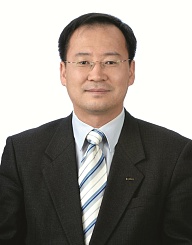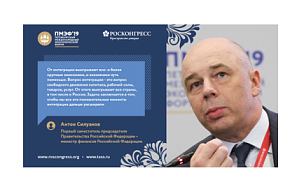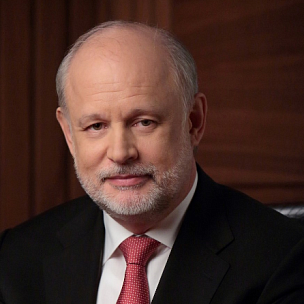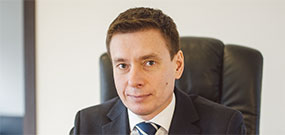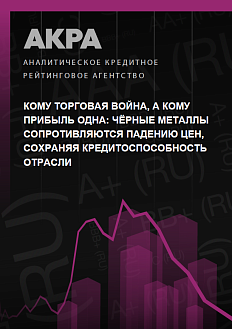What can be done to increase the flow of goods and investment between Russia and South Korea?
Relations between Russia and South Korea are looking up. In 2017, trade between the two countries increased by a record 41% to USD 19 billion. Kim Jongkwon, General Director of the Korea Trade-Investment Promotion Agency (KOTRA), tells us about the potential for economic cooperation and the main issue with the Russian Far Easts advanced special economic zones (ASEZs).
South Korea is actively investing in other countries economies, but less than 1% of this investment is going to Russia. Why such a modest figure?
Its true that, between 1989 and 2016, South Korea invested around USD 2.5 billion in Russian manufactur ing, which was just 0.72% of South Koreas total foreign investment. However, what you need to understand is that Korea historically and culturally prefers Western countries. Most Koreans get their information about Russia from the West and from America, and this information is often incorrect. Its a real problem. That said, the situation is starting to change. The change of government in South Korea last year has allowed us to take some important steps towards expanding cooperation with Russia and the number of Korean business leaders who are interested in investing in Russian companies has dramatically increased due to Russian activities such as the policies being pursued in the Far East. They are keen to invest in electronics, mechanical engineering, the food industry, and other sectors. I think the level of investment is going to increase.
Background
About KOTRA
KOTRA has 127 overseas offices all over the world and 10 offices in the CIS. KOTRA opened an office in Moscow as early as 1989, during the Soviet era. It went on to open offices in St. Petersburg, Vladivostok, and Novosibirsk.
What do you think about the steps Russia is set to take in response in the near future? The creation of ASEZs in the Far East, for instance?
The investment climate in Russia is changing very quickly, and for the better. According to the Doing Business rankings compiled by the World Bank every year, Russia has made a real leap forward and is now 35th in the world for ease of doing business. This makes Russia much more attractive than even China, which is 78th.
As far as the attractiveness of the Far Eastern ASEZs is concerned, Im afraid the problem of low population density is making itself felt. Japan, China, and Korea want to work with Russias eastern regions, but theres less of a market there: trade mostly has to go through Moscow, St. Petersburg, or other large cities. Its the west of Russia that Korean companies are attracted to because of its developed business infrastructure and extensive consumer markets.
On the other hand, during last years Eastern Economic Forum, the Export Import Bank of Korea and the Far East Development Fund signed a cooperation agreement, according to which South Korea will invest RUB 2 billion in projects across the Russian Far East over the next three years. Initiatives like these are intended to significantly improve the situation.
When the President of South Korea, Moon Jae-in, visited Russia in June 2018, he suggested increasing bilateral trade between Russia and South Korea by 50%, bringing it to USD 30 billion by 2020. Are there prerequisites for this increase?
Of course. During 20142016, trade between Russia and Korea stagnated. In 2017, we saw the beginning of efforts to improve the situation: last year, trade between our countries was worth almost USD 19 billion. Russia needs to ensure its market has the necessary equipment and technology, and this is where South Korea could become a reliable long-term partner. Since an agreement to remove visa restrictions was signed in 2014, the number of Korean tourists visiting Russia has been increasing, and the World Cup, hosted by Russia, really sparked Koreans interest. These factors also have an impact on trade. Moreover, trade could increase many times over if Korea and Russia were to sign a free trade agreement. I believe Korea should be importing more energy resources from Russia. If the relationship between North and South Korea is improved and gas begins to be supplied across North Korean territory, then we might well be able to reach the figure that was stated, or at least get close.
You mean the project to build a gas pipeline from Russia to South Korea across North Korea? How realistic is that?
Relations between North and South Korea are changing quite significantly. North Korea is changing its policies, as the recent meeting between Kim Jong-un and Donald Trump demonstrated. However, North Korea is still facing sanctions and remains in what is essentially economic isolation. If joint projects allow us to import Russian gas through North Korea to South Korea, that would have a very beneficial impact on trade and other areas of cooperation between our three countries. Cooperation with Russia would also allow North Korea to enter European markets, for instance. That would be very good to see. Still, this is a political issue, and Im afraid I cant tell you how long it will take to resolve it.
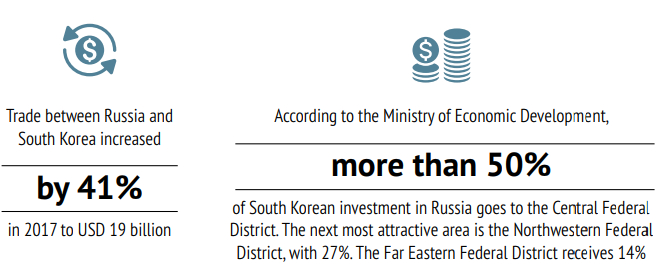
Would the question of creating a free trade zone between Korea and the Eurasian Economic Union be easier to resolve?
Creating such a free trade zone would certainly stimulate trade between our countries. However, as I understand it, Russias main aim at the moment is to promote its own industry and domestic manufacturing. This would be quite a challenge if the country were to act as part of an economic union the Eurasian Economic Union, in this case. Our government has recently offered to begin talks with Russia specifically, to discuss investment and areas of mutual interest. In this way, we will move forward sector by sector, country by country, gradually entering the markets of members of the Eurasian Economic Union.
In an interview, you mentioned that KOTRA sends 200 entrepreneurs from Russia to Korea every year and vice versa. What line of business are they in?
They are not necessarily representatives of any particular sectors; they work in all parts of the economy. However, KOTRAs main interest is in collaborating with small and medium-sized enterprises. Large companies with a sizeable network of subsidiaries and all the professionals they need can do everything for themselves. Our aim is to organize as many meetings as possible between businesspeople. For instance, many business events are held in Korea, at both the government and regional level, which we advertise and promote.
What changes are you seeing in terms of the requirements of Russian companies wanting to begin doing business in Korea, and vice versa?
Things are moving in the right direction. Nowadays, many sectors of the economy are coming together and wanting to work in tandem. One of the prerequisites for successful development is ensuring that the technologies our countries use can be integrated. When it comes to the fourth industrial revolution, Russia possesses certain advantages: it is scientifically and technologically advanced, and has a highly-qualified workforce. Korea, on the other hand, knows how to commercialize technologies. What we are trying to do is bring together these sectors and the companies who work within them.


